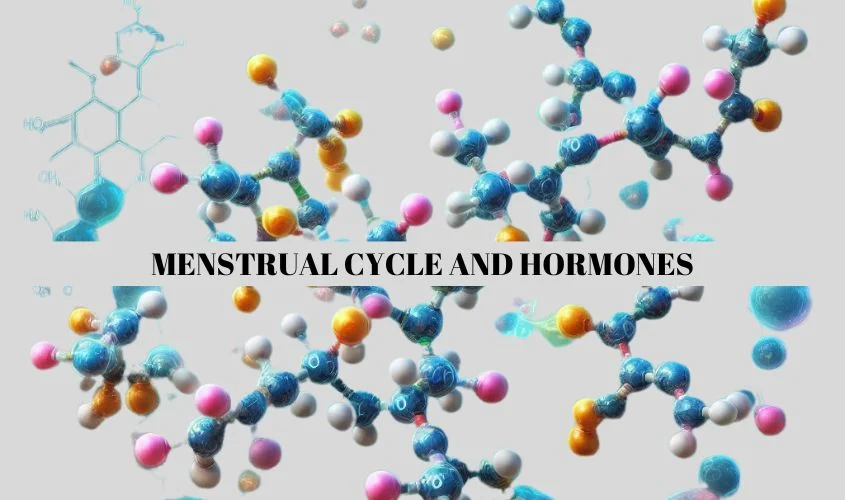Menstrual Cycle and Hormones: What You Need to Know
Understanding the menstrual cycle is essential for women’s health. The cycle is regulated by hormones that fluctuate at different phases, affecting not just reproductive health but also physical and emotional well-being. In this article, we will explore the role of hormones in each phase of the menstrual cycle and their impact on the body. By the end, you’ll have a clearer understanding of how these hormonal changes influence your health.
What Is the Menstrual Cycle?
The menstrual cycle is a monthly process that prepares the female body for potential pregnancy. The average cycle lasts about 28 days, but it can range from 21 to 35 days in adults. The cycle can be divided into four key phases: menstrual, follicular, ovulation, and luteal. Each phase is associated with specific hormonal changes that drive various physiological processes.
The Role of Hormones
Hormones are chemical messengers in the body that regulate many functions, including metabolism, growth, and reproduction. In the context of the menstrual cycle, key hormones include:
- Estrogen
- Progesterone
- Follicle-stimulating hormone (FSH)
- Luteinizing hormone (LH)
Phase 1: Menstrual Phase (Days 1-5)
Menstrual phase marks the beginning of the cycle. It starts on the first day of menstruation when the uterine lining is shed. Hormonal levels are low during this phase, primarily due to a drop in estrogen and progesterone.
Key Hormonal Changes:
- Estrogen and Progesterone: Levels are at their lowest.
- FSH: Begins to rise, stimulating the development of follicles in the ovaries.
Impact on the Body:
During this phase, women may experience symptoms such as cramps, fatigue, and mood swings. Low hormone levels can lead to irritability and discomfort, but these symptoms often subside as the body transitions into the next phase.
Phase 2: Follicular Phase (Days 1-13)
The follicular phase overlaps with the menstrual phase. As menstruation ends, the body starts to prepare for the next ovulation. This phase is characterized by an increase in FSH, which promotes the growth of ovarian follicles.
Key Hormonal Changes:
- FSH: Rises to stimulate the growth of follicles.
- Estrogen: Levels begin to increase as follicles mature.
Impact on the Body:
As estrogen levels rise, women may notice increased energy, improved mood, and enhanced libido. Estrogen also causes the cervical mucus to become thinner and more slippery, making it easier for sperm to travel if fertilization occurs.
Phase 3: Ovulation Phase (Day 14)
Ovulation occurs approximately halfway through the menstrual cycle, usually around day 14 in a 28-day cycle. This phase is marked by a surge in LH, triggered by rising estrogen levels.
Key Hormonal Changes:
- LH: Peaks, causing the release of a mature egg from the dominant follicle.
- Estrogen: Reaches its highest level just before ovulation.
Impact on the Body:
Women often experience heightened sexual desire during ovulation. Some may also notice changes in cervical mucus, which becomes clear and stretchy, resembling egg whites. These changes are nature’s way of signaling fertility.
Phase 4: Luteal Phase (Days 15-28)
The luteal phase follows ovulation and lasts until the start of the next menstrual period. After releasing the egg, the ruptured follicle transforms into the corpus luteum, which produces progesterone.
Key Hormonal Changes:
- Progesterone: Levels rise to prepare the uterine lining for a potential pregnancy.
- Estrogen: Remains elevated but gradually decreases as the luteal phase progresses.
Impact on the Body:
As progesterone levels rise, many women experience premenstrual syndrome (PMS) symptoms, such as mood swings, bloating, and breast tenderness. If pregnancy does not occur, hormone levels drop, leading to the start of menstruation and the cycle begins anew.
Importance of Hormonal Balance
Maintaining hormonal balance is crucial for overall health. Hormonal imbalances can lead to irregular periods, mood swings, and other health issues. Understanding your cycle can help you identify irregularities and seek medical advice if needed.
Tips for Tracking Your Menstrual Cycle
- Use a Calendar or App: Mark the start and end dates of your periods. Apps like Selin can help you monitor your cycle and symptoms effectively.
- Log Symptoms: Keep a record of physical and emotional symptoms. This information can help you recognize patterns and identify any irregularities.
- Monitor Basal Temperature: Tracking your basal body temperature can help you identify ovulation and understand your fertility window.
Conclusion
The cycle and the role of hormones is essential for women’s health. Each phase of the cycle is governed by hormonal changes that affect your body in various ways. By tracking your menstrual cycle, you can gain valuable insights into your health and well-being.
For tips on maintaining menstrual health, see our related content How to Track Your Menstrual Cycle
Start Tracking Your Cycle with Selin
For personalized insights, consider using the Selin app to track your menstrual cycle and monitor your hormonal changes. This tool can help you better understand your body and manage your reproductive health effectively.















